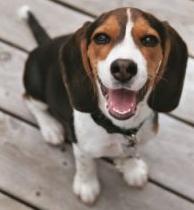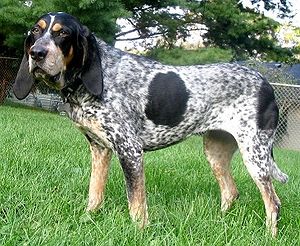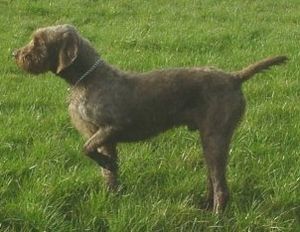 |
| Vital Statistics: |
| Place of Origin: United States |
| Group: Working dog, Companion dog |
| Height: 9-12 in. |
| Weight: 15-20 lbs. |
| Life span: 12-15 yrs. |
| Trainability: high |
| Good with children: children who treat them kindly |
| Good with other pets: only with supervision |
What is the origin of the Chacy Ranior?
Once known as the Shichon, the Chacy Ranior was developed in the year 2000. Confusion over the name (Shichon, a cross between a Bichon and a Shih-Tzu), caused the change in 2006. Breeds used to develop the Chacy include Bichon Frise, Yorkshire Terrier, Maltese, Shih-Tzu, Lhasa Apso, Poodle, Havanese and Miniature Schnauzer – quite an impressive background.
What does the Chacy Ranior look like?
Height is 9-12 inches and weight is 15-20 lbs. The chest is wide and the shoulders arr broad. Ears are dropped. Eyes are dark colored and circled with gray or black. Lips are black. The tail is sickle-shaped. The coat is soft and dense with an insulating undercoat. Chacys shed little and can be good pets for allergy sufferers. Coat colors come in a wide variety of combinations including, tan, black and tan, liver, liver and white, apricot, black brindle and black and white. Regular brushing keeps the coat neat and clean.
What is the temperament of the Chacy Ranior?
The Chacy is playful and alert. It is an intelligent breed and easily trained with positive methods. Chacys are intuitive and sensitive. They were originally bred for special needs children and get along well with children who treat them kindly. They are good with other dogs and with cats. If a Chacy must be left alone for long periods, another dog or a cat should be considered for companionship to avoid unwanted behavior. Other small pets should not be left alone with a Chacy. They enjoy daily walks and romps in the park as they are active dogs. Chacys can live in an apartment as long as they are exercised enough.
What is the Chacy Ranior used for?
The Chacy is very intelligent and athletic and does well in agility and obedience trials. It is a breed very devoted to its family making it a wonderful companion.
Possible Health Issues
No known health issues at present.
- Alaskan Klee Kai
- Bichon Frise
- Bichpoo
- Brussels Griffon
- Bull Terrier
- Bulldog
- Cardigan Welsh Corgi
- Cavalier King Charles Spaniel
- Chihuahua
- Chinese Crested
- Coton de Tulear
- Eurasier
- French Bulldog
- German Spitz (Giant, Standard, Toy)
- Hairless Khala
- Havanese
- Japanese Chin
- Japanese Chin Dog
- Keeshond
- Lhasa Apso
- Lowchen
- Maltese
- Mi Ki
- Miniature Pinscher
- Moscow Toy Terrier
- Norwegian Lundehund
- Papillon
- Pekingese
- Pomeranian
- Poodle
- Portuguese Water Dog
- Pug
- Sanshu
- Schipperke
- Schnorgi
- Shiba Inu
- Shih-Tzu
- Tibetan Spaniel
- Yorkshire Terrier
- Akbash Dog
- Alaskan Malamute
- Anatolian Shepherd Dog
- Appenzell Mountain Dog
- Belgian Malinois
- Boxer
- Burnese Mountain Dog
- Canaan Dog
- Chinook
- Deutscher (German) Pinscher
- Doberman Pinscher
- Dogue de Bordeaux
- Estrela Mountain Dog
- German Spitz (Giant, Standard, Toy)
- Giant Schnauzer
- Great Dane
- Greater Swiss Mountain Dog
- Greenland
- Irish Red & White Setter
- Kai Ken
- Korean Jindo Dog
- Kuvasz
- Laika
- Leonberger
- Newfoundland
- Norwegian Elkhound
- Rat Terrier
- Rottweiler
- Saint Bernard
- Samoyed
- Siberian Husky
- Standard Schnauzer
- Tibetan Mastiff
- Alaskan Klee Kai
- Alaskan Malamute
- American Cocker Spaniel
- American Eskimo Dog
- American Foxhound
- American Pit Bull Terrier
- American Stratfordshire Terrier
- Australian Shepherd
- Bichpoo
- Black and Tan Coonhound
- Blue Lacy
- Boston Terrier
- Boykin Spaniel
- Carolina Dog
- Catahoula Leopard Dog
- Chesapeake Bay Retriever
- Chinook
- English Shepherd
- Maltipoo
- Mi Ki
- Miniature American Shepherd
- Mountain Cur
- Plott Hound
- Rat Terrier
- Redbone Coonhound
- Redtick Coonhound
- Silken Windhound
- Toy Fox Terrier
- Treeing Tennessee Brindle



